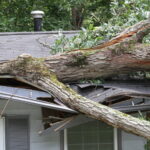Ensuring the integrity of your home’s plumbing system is crucial for maintaining a safe and comfortable living environment. Over time, pipes can deteriorate due to factors like corrosion, leaks, and general wear and tear. Recognizing the signs that indicate the need for a whole house repipe can prevent potential damage and costly repairs.
Signs Your Home May Need Repiping
Several indicators suggest that your home’s plumbing system requires attention:
- Frequent Leaks: Regular occurrences of leaks, especially in different areas, may signal systemic issues.
- Discolored Water: Rusty or discolored water can indicate pipe corrosion, affecting water quality.
- Low Water Pressure: A noticeable drop in water pressure throughout the house might be due to pipe blockages or leaks.
- Noisy Pipes: Unusual sounds like banging or clanking can be a sign of deteriorating pipes.
Benefits of Repiping Your Home
Opting for a comprehensive repiping offers several advantages:
- Enhanced Water Quality: New pipes eliminate contaminants, ensuring cleaner water.
- Improved Water Pressure: Replacing old pipes can restore optimal water flow.
- Increased Property Value: A modern plumbing system can boost your home’s market value.
- Long-Term Savings: Addressing plumbing issues proactively can prevent costly future repairs.
Choosing the Right Materials for Repiping
Selecting appropriate materials is vital for the longevity and efficiency of your plumbing system. Common options include:
- Copper Pipes: Known for durability and resistance to corrosion, copper is a traditional choice.
- PEX Pipes: Flexible and resistant to scale and chlorine, PEX is increasingly popular for repiping projects.
The Repiping Process: What to Expect
Understanding the steps involved in repiping can help homeowners prepare:
- Assessment: A thorough inspection to determine the extent of pipe deterioration.
- Planning: Developing a strategy that minimizes disruption to daily life.
- Installation: Replacing old pipes with new materials, ensuring compliance with local codes.
- Restoration: Repairing any affected areas, such as walls or floors, to their original condition.
Conclusion
Investing in a whole house repipe is a proactive measure that safeguards your home’s plumbing system, enhances water quality, and adds value to your property. By recognizing the signs of deteriorating pipes and choosing the right materials, homeowners can ensure a reliable and efficient plumbing infrastructure for years to come.










